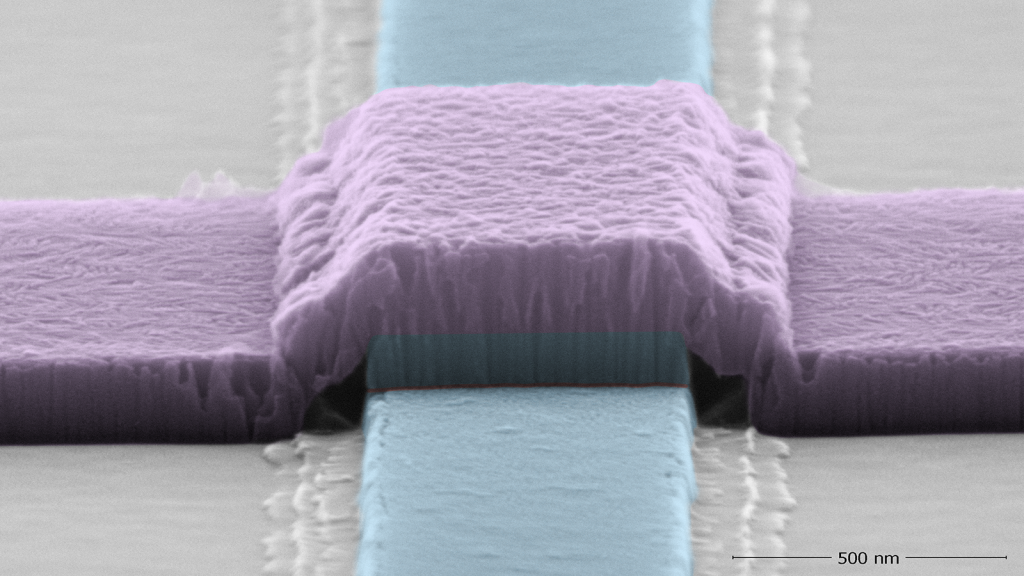Developed method for nanofabrication of high coherence Nb-trilayer Josephson junctions.
Science: Researchers at Stanford University and the University of Chicago have developed a type of niobium trilayer Josephson junction for incorporation in superconducting qubits, leading to improved coherence times and quality factors.
Impact: Potentially replace central element of all superconducting qubits and sensors.

Summary: The fundamental element in all superconducting devices for quantum computation or sensing is the Josephson junction. Currently, these are made from Al/AlOx/Al tunnel junctions. Nb-based junctions have been known for a long time in classical applications but are generally not coherent enough for use in quantum applications. The Schuster Group has developed a Nb junction fabrication process that gives similar coherence to all-aluminum junctions but that is much more resistant to non-equilibrium quasiparticles and can enable qubit/sensor operation at temperatures above 100mK and frequencies above 40GHz. The rate over which an excited state decays (T1 time) can reach as high as 70us at lower frequencies and ~30us at 5GHz.
Contact: David Schuster, dschus@stanford.edu
Focus area: Quantum devices and sensors
Institutions: Stanford University, University of Chicago, SLAC National Accelerator Laboratory
Citation: A. Anferov, K.-H. Lee, F. Zhao, J. Simon, D. I. Schuster. “Improved coherence in optically defined niobium trilayer-junction qubits.” Physical Review Applied 21, 024047.
Funding acknowledgement: This work is supported by the U.S. Department of Energy Office of Science National Quantum Information Science Research Centers as part of the Q-NEXT center, and partially supported by the University of Chicago Materials Research Science and Engineering Center, which is funded by the National Science Foundation under Grant No. DMR-1420709. This document was prepared using the resources of the Fermi National Accelerator Laboratory (Fermilab), a U.S. Department of Energy, Office of Science, Office of High Energy Physics HEP User Facility. Fermilab is managed by Fermi Research Alliance, LLC (FRA), acting under Contract No. DE-AC02-07CH11359. This work made use of the Pritzker Nanofabrication Facility of the Institute for Molecular Engineering at the University of Chicago, which receives support from Soft and Hybrid Nanotechnology Experimental (SHyNE) Resource (NSF ECCS-2025633).